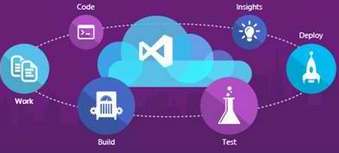Microsoft debuts its cloud-based complement to Visual Studio

Microsoft execs have been saying for the past couple of years that nearly every on-premises Microsoft product will have a cloud complement. On November 13, Microsoft developer division execs unveiled the cloudy side of Microsoft's Visual Studio development tool suite: Visual Studio Online.

Visual Studio Online consists (at least to start) of a handful of new developer services running on its Windows Azure cloud platform. These new services are meant to complement the client version of Visual Studio integrated desktop environment (IDE).
Microsoft execs went public with the first Visual Studio Online deliverables during the company's Visual Studio 2013 launch event in New York City on November 13. Microsoft is making public previews of the first five Visual Studio Online services available as of today.
The Visual Studio Online initial line-up includes:
- Hosted source control, work-item and agile-planning services (in other words, the key capabilities of Team Foundation Service on Windows Azure)
- A hosted build service
- Elastic load testing service
- Application Insights -- a service that provides information such as health, availability, performance and usage of applications
- "Monaco" -- a coding environment "for the cloud, in the cloud," which provides a subset of Visual Studio features inside a variety of browsers for "targeted Azure development scenarios." The first of these scenarios is for editing Azure Web Sites directly from inside any "modern" browser, on any device (Windows-based or not). Microsoft has been working on Monaco for three years, execs said, and already has used the Monaco technology for some of its other cloud-based developer offerings, including the Office 365 "Napa" development tools, to SkyDrive file editing.
Visual Studio Online will be free for teams up to five users. Visual Studio Online also is going to be part of Microsoft Developer Network subscriptions. Separate Visual Studio Online subscription plans, which include access to the Visual Studio Professional IDE, are also for sale, as of today. Pricing for all these new options is here.
"It's a new era for Visual Studio with Visual Studio Online," said Soma Somasegar, Microsoft's Corporate Vice President of its Developer Division. The company started with Visual Studio client; then added a server component with Team Foundation System; and is now providing end-to-end services for the cloud, Somasegar said.
Microsoft unveiled the Visual Studio Online platform the same day that it announced Visual Studio 2013 and .Net 4.5.1 are officially available on a global basis. Microsoft released to manufacturing Visual Studio 2013 and .Net 4.5.1 in October 2013 and made them available to many of its customers shortly thereafter.
Visual Studio 2013 and Net 4.5.1 add support for asynchronous debugging (when using VS 2013 on Windows 8.1, not older Windows releases) for C#, VB, JavaScript and C++ developers, among other features. The latest VS release also adds improvements for those using XAML, HTML and JavaScript to build Windows Store/Metro-Style apps.